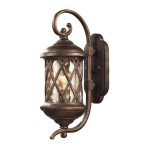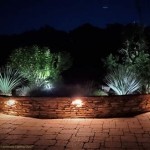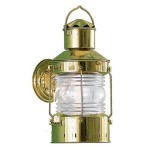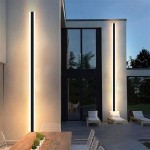Are There Indoor and Outdoor Light Bulbs? Understanding the Differences
The world of light bulbs can seem straightforward at first glance, but a deeper dive reveals a surprising amount of nuance. One common question that arises is whether there are distinct types of light bulbs specifically designed for indoor and outdoor use. The short answer is yes, but the reasons behind this distinction are more complex than simply labeling. Understanding these differences is crucial for selecting the right bulbs for specific applications, ensuring optimal performance, longevity, and most importantly, safety.
Selecting the appropriate light bulb is more than just a matter of brightness. Factors such as environmental exposure, thermal management, and intended function all play a significant role in determining which bulb is best suited for a particular location. Using an indoor bulb outdoors, or vice versa, can lead to premature failure, reduced energy efficiency, and even hazardous situations.
Key Point 1: Environmental Considerations and Bulb Protection
The primary difference between indoor and outdoor light bulbs lies in their construction and protective features. Outdoor bulbs are designed to withstand the rigors of the external environment, which includes exposure to moisture, temperature fluctuations, and physical impact. Indoor bulbs, on the other hand, are generally not built to endure such harsh conditions.
Moisture is a significant concern for outdoor lighting. Rain, snow, and humidity can all corrode the internal components of a light bulb, leading to short circuits and failure. Outdoor bulbs are often encased in weatherproof housings, such as those made of durable plastic or sealed glass, to prevent water from entering. These housings are typically rated according to an Ingress Protection (IP) code, which indicates the level of protection against solid objects (like dust) and liquids. A higher IP rating signifies greater protection. For example, an IP65 rating indicates protection against dust and water jets from any direction, making it suitable for many outdoor applications.
Temperature fluctuations can also have a detrimental effect on light bulb performance. Rapid changes in temperature can cause stress on the bulb's internal components, leading to cracking or breakage. Outdoor bulbs are often constructed with materials that can withstand a wider range of temperatures than their indoor counterparts. Furthermore, some outdoor bulbs incorporate features like thermal management systems to dissipate heat more efficiently, preventing overheating and extending the bulb's lifespan. This is particularly important for enclosed outdoor fixtures where heat can build up quickly.
Physical impact resistance is another important consideration for outdoor bulbs. They are more likely to be exposed to accidental bumps, vibrations, and even vandalism. As such, outdoor bulbs are often made with stronger materials, such as shatter-resistant glass or polycarbonate, to minimize the risk of breakage. Some bulbs are also designed with thicker filaments or more robust internal structures to withstand vibrations from wind or traffic.
Indoor bulbs, in contrast, often lack these protective features. They are designed for a controlled indoor environment where moisture, temperature fluctuations, and physical impact are less of a concern. Using an indoor bulb outdoors significantly increases the risk of premature failure and potential safety hazards.
Key Point 2: Light Output and Color Temperature
Beyond environmental protection, indoor and outdoor light bulbs often differ in terms of light output and color temperature. These characteristics are tailored to the specific lighting needs of each environment.
Light output, measured in lumens, refers to the total amount of light emitted by a bulb. Outdoor lighting typically requires higher lumen output than indoor lighting, as it needs to illuminate larger areas and overcome ambient light from the surrounding environment. For example, a porch light might require a bulb with 800-1000 lumens, while a floodlight used to illuminate a driveway could require 1500 lumens or more. Outdoor bulbs are often designed to deliver a brighter, more intense light to enhance visibility and security.
Color temperature, measured in Kelvin (K), describes the warmth or coolness of the light emitted by a bulb. Lower Kelvin values (e.g., 2700K) produce a warm, yellowish light, while higher Kelvin values (e.g., 5000K) produce a cool, bluish-white light. Indoor lighting often favors warmer color temperatures, creating a cozy and inviting atmosphere. Outdoor lighting, on the other hand, may benefit from cooler color temperatures, which provide better visibility and color rendering. Cooler light can also improve security by making details more visible at night.
The choice of color temperature also depends on the intended function of the lighting. For example, landscape lighting may benefit from warmer color temperatures to enhance the natural beauty of plants and trees, while security lighting may benefit from cooler color temperatures to maximize visibility. It's important to consider the desired aesthetic and functional requirements when selecting the appropriate color temperature for outdoor lighting.
Indoor bulbs are generally designed with a focus on creating a comfortable and aesthetically pleasing indoor environment. They often prioritize softer, warmer light that is less harsh on the eyes. Outdoor bulbs, conversely, often prioritize brightness and clarity to enhance visibility and safety.
Key Point 3: Bulb Types and Technologies
The type of light bulb technology used also influences its suitability for indoor or outdoor applications. While various bulb types can be used both indoors and outdoors, some are better suited for specific environments due to their performance characteristics and durability.
Incandescent bulbs, while becoming less common due to their energy inefficiency, can be used both indoors and outdoors. However, they are particularly susceptible to damage from moisture and temperature fluctuations, making them less durable for outdoor use. When used outdoors, they should be protected by a weatherproof fixture.
Halogen bulbs are also suitable for both indoor and outdoor applications, offering a brighter, whiter light than incandescent bulbs. Like incandescent bulbs, they can be sensitive to moisture and should be protected by a weatherproof fixture when used outdoors. Halogen bulbs also produce a significant amount of heat, which can be a concern in enclosed outdoor fixtures.
Compact fluorescent lamps (CFLs) are more energy-efficient than incandescent and halogen bulbs, but they can be more sensitive to temperature fluctuations. Some CFLs are specifically designed for outdoor use, with features like weatherproof housings and cold-start capabilities. However, it's important to check the manufacturer's specifications to ensure that a CFL is suitable for outdoor use.
Light-emitting diode (LED) bulbs are generally the most durable and energy-efficient option for both indoor and outdoor lighting. They are resistant to moisture, temperature fluctuations, and physical impact, making them well-suited for harsh outdoor environments. LED bulbs also have a long lifespan, reducing the need for frequent replacements. Furthermore, LED technology allows for precise control over light output and color temperature, making it possible to tailor the lighting to specific needs. The initial cost of LED bulbs may be higher than other types, but their long lifespan and energy efficiency often result in significant cost savings over time.
When selecting bulbs for outdoor use, it's important to consider the specific requirements of the fixture. Some fixtures are designed to accommodate specific types of bulbs, while others are more versatile. It's also important to check the voltage and wattage ratings of the fixture to ensure compatibility with the chosen bulb.
In conclusion, while some light bulb types can technically be used both indoors and outdoors, the characteristics and protective features of bulbs designed specifically for each environment are significantly different. Understanding these differences is essential for selecting the right bulbs for specific applications, ensuring optimal performance, longevity, and safety. Environmental protection, light output, color temperature, and bulb technology all play a critical role in determining the suitability of a light bulb for indoor or outdoor use.

Indoor And Outdoor Light Bulbs Pacific Lamp Supply Company

Newhouse Lighting Indoor Outdoor 50 Ft Plug In Globe Bulbs Party Led String Lights With 55 G40 Included 5 Free Pstringled50 The Home Depot

Better Homes Gardens 24ft Vintage Warm White Spiral Led String Light For Indoor And Outdoor Use Com

Hampton Bay Indoor Outdoor 12 Light 24 Ft Smart Plug In Edison Bulb Rgbw Color Changing Led String Powered By Hubspace Hb 10521 Hs The Home Depot

Dusk To Dawn Light Bulb 2 Pack A19 Led Sensor Bulbs Ul Listed Automatic On Off 800 Lumen 10w 60 Watt Equivalent E26 Base 3000k Warm White Indoor Outdoor Lighting Com

Harbor Breeze 53 Ft Plug In Black Indoor Outdoor String Light With 50 White Incandescent Globe Bulbs The Lights Department At Com

Hampton Bay 6 Light 12 Ft Indoor Outdoor Plug In Led S14 Flame Effect String Set Sl12 V1 Hd The Home Depot

Indoor Vs Outdoor Lighting Are They Interchangeable Kirby Electric

Harbor Breeze 28 Ft Plug In Black Indoor Outdoor String Light With 25 White Incandescent Globe Bulbs The Lights Department At Com

10 Watt Par30 Short Neck Flood Dimmable Indoor Outdoor Led Light Bulb Westinghouse
Related Posts







